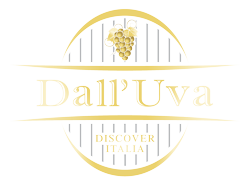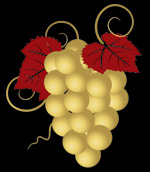Home›Dall'Uva Forums›Italian Wines›Wine Resources›How to Read Italian Wine Labels
- This topic has 0 replies, 1 voice, and was last updated 10 years, 1 month ago by
 Michael Horne.
Michael Horne.
-
AuthorPosts
-
-
15 Mar 14 at 5:22 PM #6094
 Michael HorneKeymaster
Michael HorneKeymaster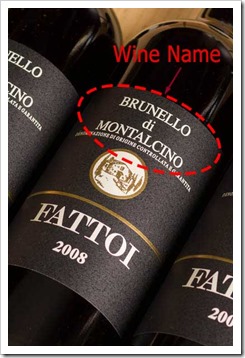 Italian wine labels sometimes befuddle wine buyers.
Italian wine labels sometimes befuddle wine buyers.They’re not too tough to decipher if you keep in mind just a few basic rules of how Italian wine labels are created.
Italian wine labels usually specify the region it’s from,
not the grape.Italian (and most European) wines tend to specify the region they’re from, and not the grape varietal. For example, Brunello di Montalcino is made from Sangiovese grapes, but you won’t see the grape listed on the front label. Brunello is the short name of the wine, and di Montalcino means the wine is made in the town of Montalcino in Tuscany.
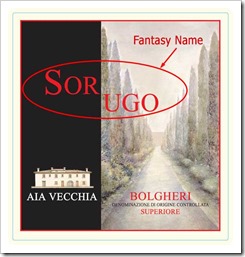 Some Italian wine producers choose to give their wine a name in addition to specifying its regional name, something that’s called the Fantasy Name by folks in the wine trade. For example, Tuscan producer Aia Vecchia makes a wine called Sor Ugo (fantasy name) that is a Bolgheri Superiore (regional name) wine made from Cabernet Sauvignon and Merlot.
Some Italian wine producers choose to give their wine a name in addition to specifying its regional name, something that’s called the Fantasy Name by folks in the wine trade. For example, Tuscan producer Aia Vecchia makes a wine called Sor Ugo (fantasy name) that is a Bolgheri Superiore (regional name) wine made from Cabernet Sauvignon and Merlot.“But wouldn’t it be easier if they just listed the grape?” Well, yes, but that’s not how it was done historically in Europe. The region where a wine was made was often more important than what grape was in the bottle. It’s about tradition, and over time you’ll learn what’s in the bottle and automatically think “Sangiovese” when you hear Brunello or Chianti Classico or Vino Nobile.
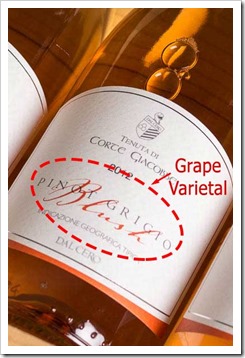 That said, some regions in the north and south of Italy do specify the grape on the label; the classic example everyone is familiar with is Pinot Grigio from the Veneto region.
That said, some regions in the north and south of Italy do specify the grape on the label; the classic example everyone is familiar with is Pinot Grigio from the Veneto region.Curious what grape varietals are in the wine you love? I suggest you google it. Here are a few common wines and their principal grapes:
- Chianti, Brunello, Vino Nobile, Sagrantino – Sangiovese
- Barolo, Barbaresco – Nebbiolo
- Prosecco – Glera
- Amarone, Valpolicella – Corvina, Rondinella
- Soave – Garganega
- Taurasi – Aglianico
- Primitivo – Primitivo, but think Zinfandel
- Vin Santo – Malvasia, Trebbiano
- Super Tuscans (like Sassicaia, Ornellaia, Solaia) – blends of Sangiovese, Cabernet Sauvignon, Merlot
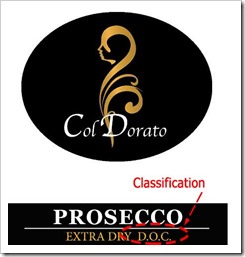 Italian wine labels specify a “quality” level of the wine.
Italian wine labels specify a “quality” level of the wine.Traditionally, wines from specific regions (like Chianti Classico) were made in a very consistent way and to a high quality level. To give the wine lover an indication of this higher quality level, wines were given a classification. The classifications you are most likely to see on a wine label today are:
VdT, or Vino da Tavola – the lowest rating level, typically used on basic table wines. NOTE: Super Tuscan wines are sometimes labeled as VdT
IGT, or Indicazione Geografica Tipica – a step above table wine and indicating that the wine is typical from the area where it is produced. There are many wonderful, high quality wines classed as IGT.
DOC, or Denominazione di Origine Controllata – the second highest quality standard indicating that the origin of the wine is controlled.
DOCG, or Denominazione di Origine Controllata e Garantita – the highest quality standard, meaning the origin of the wine is controlled and guaranteed. DOCG wines are usually aged longer than DOC wines.
While these classification names are helpful, they only give you an initial idea of the quality level. I’ve had some rockin’ VdT (table) wines that beat many DOCG wines, and don’t forget that those super-duper Super Tuscan wines you hear a lot about are IGT or VdT classed wines. Caveat emptor.
You can learn more about Italian Wine Classifications by listening to my podcast VdT, IGT, DOC, DOCG… What the Heck? Italian Wine Classifications Demystified.
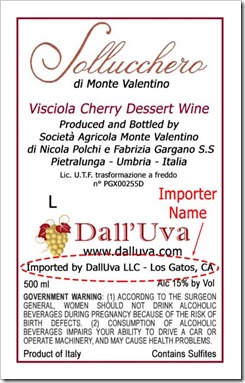 Finding a retailer who sells the wine you’re drinking.
Finding a retailer who sells the wine you’re drinking.Have you ever enjoyed a bottle of Italian wine at a restaurant and wanted to know where you can buy it? You would think it would be easy, but sometimes it’s tough to find a retailer who carries the wine.
You can usually find a retailer who carries the wine using the online resource wine-searcher.com, but failing that, you can also contact the importer of the wine to get a list of retailers they sell to.
By federal law, importers (like me) are required to put their company name and city on the label. Sometimes you need to do some sleuthing on google.com to find the importer contact info, but some of us like to put our website address on the back label.
Still stumped?
Has a particular label got you confused? Is it challenging to figure out the name of the winery, separate from the name of the wine? Post your questions, comments and thoughts below and I’ll do my best to help you out.
Cheers!
— Michael
-
-
AuthorPosts
Do you like this Forum topic?
Like it on Facebook
Reply to this Topic
You must have a Dall'Uva Forum account and be signed-in to reply to this topic.
Instant Sign-In!
Use your Facebook, Google or Yahoo account to automatically Sign-In and Register now:
No Facebook, Google or Yahoo account?
No problem! CLICK HERE to Register or Sign In the standard way.
